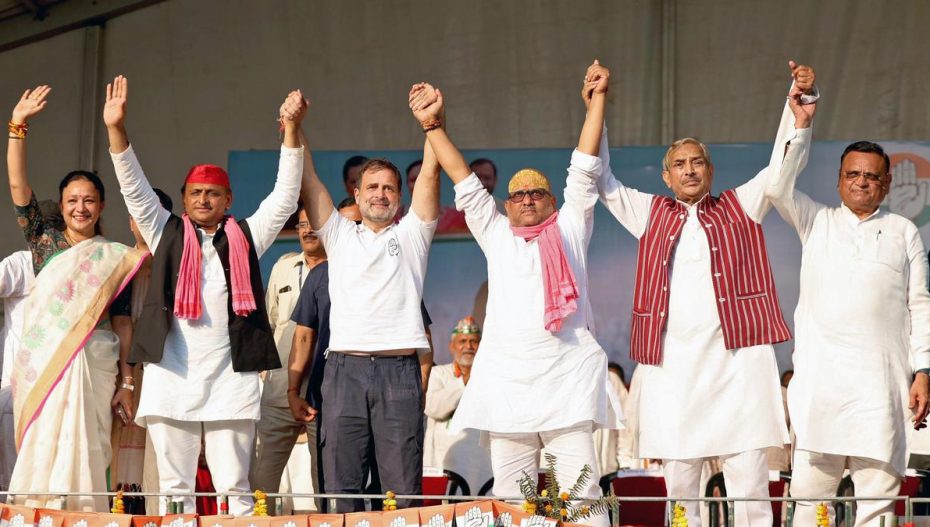The INDIA bloc brought caste and social justice to the centre of the election narrative by promising a caste census. The BJP accused Opposition of trying to take reservations from OBC and SC Hindus and giving it to Muslims.
But how did OBCs, SCs and Adivasis vote in this Lok Sabha election? According to post-poll survey data released by Lokniti-CSDS, the gains of the INDIA bloc were driven by dominant OBCs and to some extent Dalits. On the other hand, the NDA was able to win a majority by making gains among Adivasis and maintaining its dominance among Upper Castes.
According to the CSDS survey, the Congress and allies’ support among dominant OBCs increased from 24 percent in 2019 to 35 percent. This would include cases like Yadavs, Kurmis and Jats (in states like Uttar Pradesh and Rajasthan).
Among lower OBCs, the increase was from 18 percent in 2019 to 25 percent in 2024. Among this section, Congress’ allies gained marginally more than the Congress. Even among Dalits, allies gained more than the Congress. While Dalits’ preference for Congress reduced marginally from 20 percent to 19 percent, it increased from 5 percent to 13 percent among its allies.
Even the Axis-MyIndia survey that was otherwise slammed for predicting a much higher seat tally for the BJP than the final result, had predicted gains for the Opposition among Dalits.
The Congress and allies made marginal gains among Upper Castes from 18 percent in 2019 to 21 percent in 2024. But it was behind the NDA in this section by a very big margin.
However, the alliance suffered losses among Adivasis, going down from 37 percent to 31 percent.
The NDA made sizable gains among Adivasis in the 2024 elections – up from 45 percent in 2019 to 51 percent this time. It more or less maintained its hold among Upper Castes at over 50 percent. Even among lower OBCs, its vote share was same as last time.
However, the NDA lost some ground among Upper OBCs and Dalits.
Among Dalits, its vote preference fell from 41 percent in 2019 to 36 percent in 2024.
Among dominant OBCs, it reduced from 52 percent to 48 percent.
According to the Lokniti-CSDS data, the INDIA bloc got the support of a massive 82 percent among Yadavs in Uttar Pradesh and 73 percent in Bihar. This explains the rise in support among dominant OBCs for the INDIA bloc.
The alliance also performed well among Dalits in the two key Hindi heartland states. According to the survey, 56 percent among non-Jatav Dalits said they voted for the INDIA bloc in Uttar Pradesh, well ahead of both the NDA at 29 percent and BSP at 15 percent
While the INDIA bloc lagged behind the NDA among Dalits in Bihar, it made major gains in this section compared to 2019.
Among the Pasi/Dusadh community, support for the RJD-led alliance increased from just 7 percent in 2019 to 35 percent, while among other SCs it increased from 4 percent in 2019 to 42 percent.
In Bihar, the NDA maintained its dominance among Upper Castes and Kurmi-Koeri OBC voters.
In Maharashtra, the NDA had a narrow lead of seven percentage points among Marathas and a slightly higher lead of 11 percentage points among OBCs.
However, the INDIA Bloc had a lead of 11 percentage points among Dalits and 20 percentage points among Adivasis, which may have played a key role in their victory.
Also Read: Rahul Gandhi Pledges to Fight for NEET Students in Parliament












